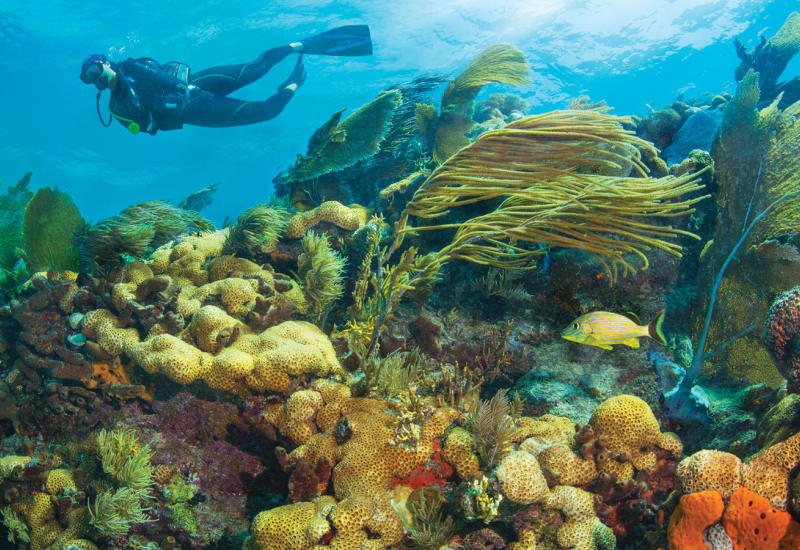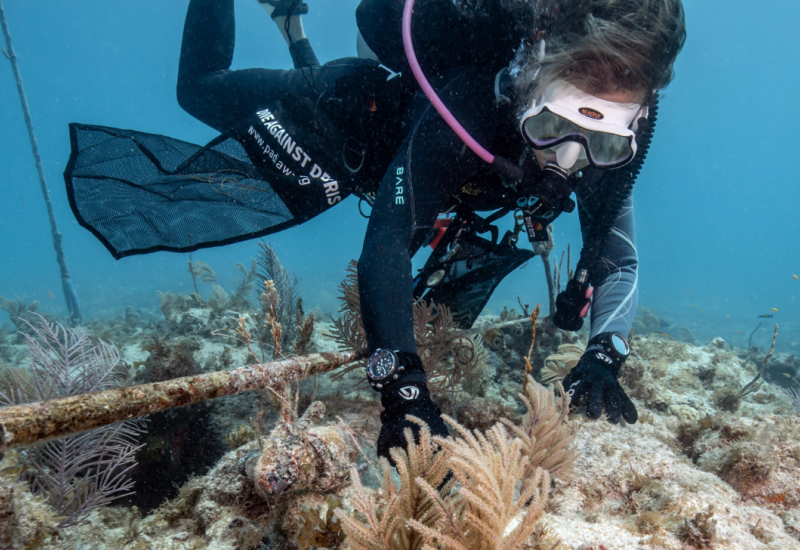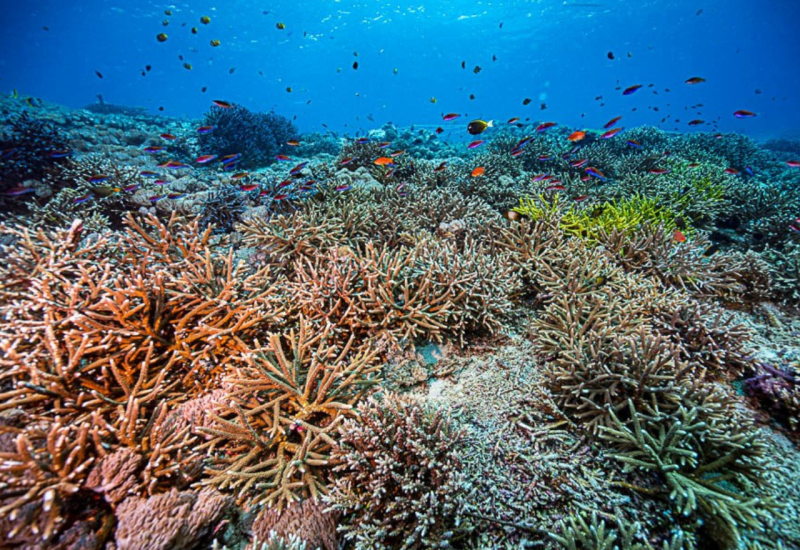Rise of the Rays: 25 Amazing Photo Contest Entries
By Eric Rodriguez
The enigmatic rays of our blue planet have long captivated wide-eyed scuba divers, marine scientists and sea-life photographers with their otherworldly appearances and graceful and mysterious behaviors. This fascination held true for much of the shining talent involved in Scuba Diving magazine's 2014 Through Your Lens photo contest. So enjoy this incredible photo-contest gallery dedicated to manta rays, eagle rays and stingrays to witness the rise of the rays!
_Photo names and captions provided by Photographers; contest winners will be announced with the launch of our September/October issue. _
Want more from the 2014 Photo Contest? We've got you covered!
_40 "Masters of Disguise" | Seahorse Central | Eye See You _
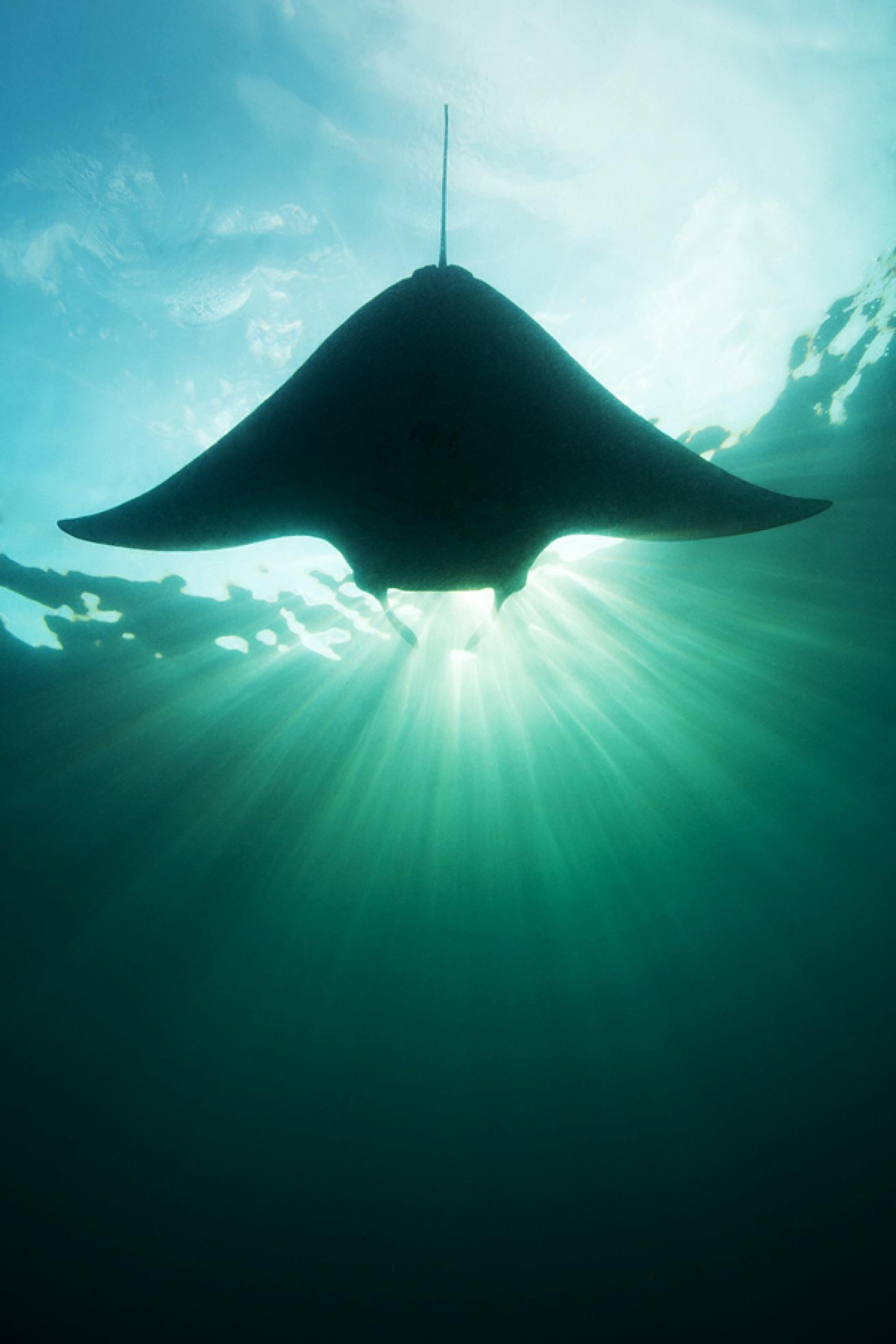
Jeff LaFrenz
Little is known about the mysterious life of manta rays. Scientific research studying their behaviors and migration patterns have only recently begun to shed light on what goes on beneath the surface in their deep blue world.
Location: Komodo, Indonesia
Category: Wide Angle
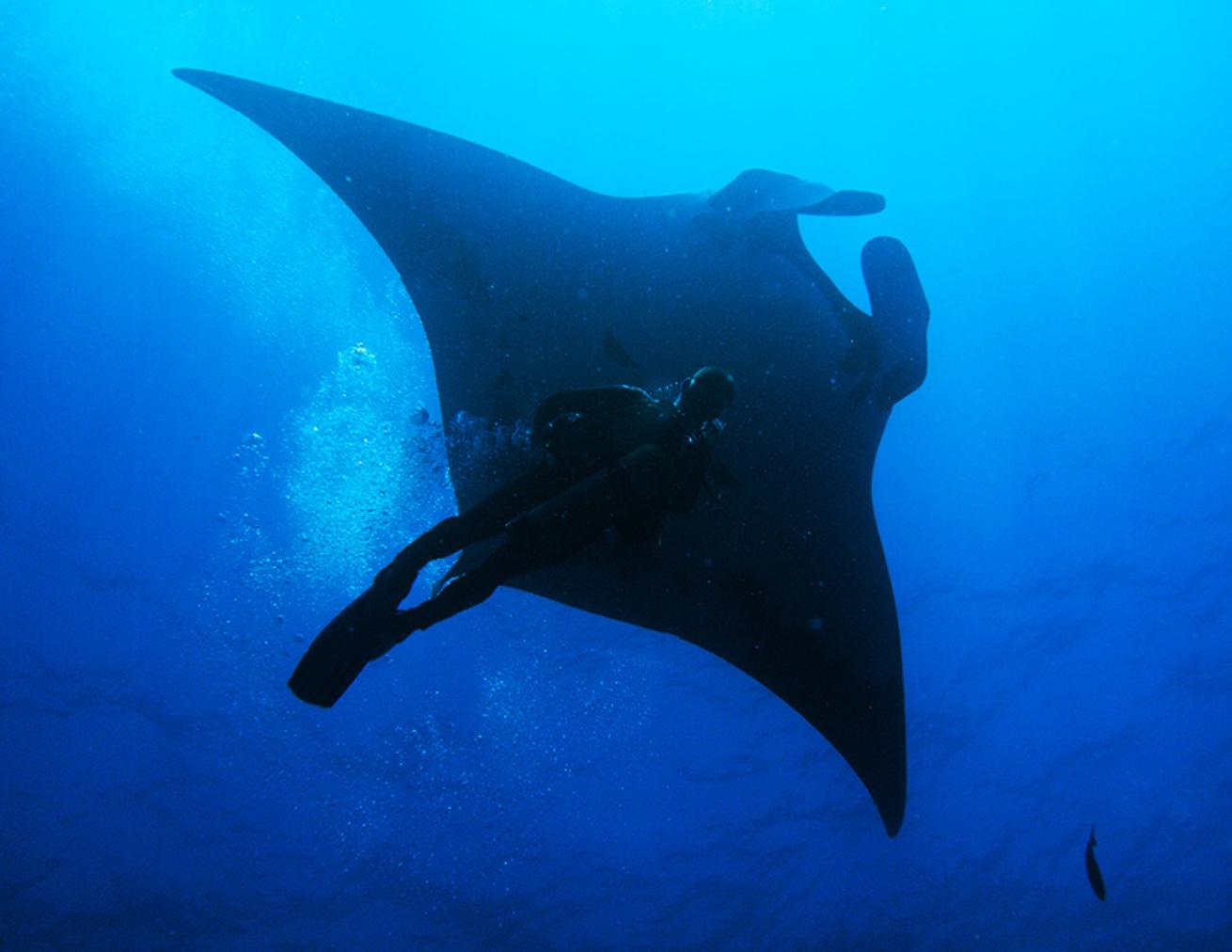
Degan Walters
Giant Mantas (Manta birostris), are the largest species of ray in the world. Giant mantas, on avarage, can grow to a wing span over 20 feet from wing tip to wing tip, with larger ones getting to wing spans of 27 feet wide.
Location: The Boiler, Socorro Island, Revillagigedos, Mexico
Category: Divers
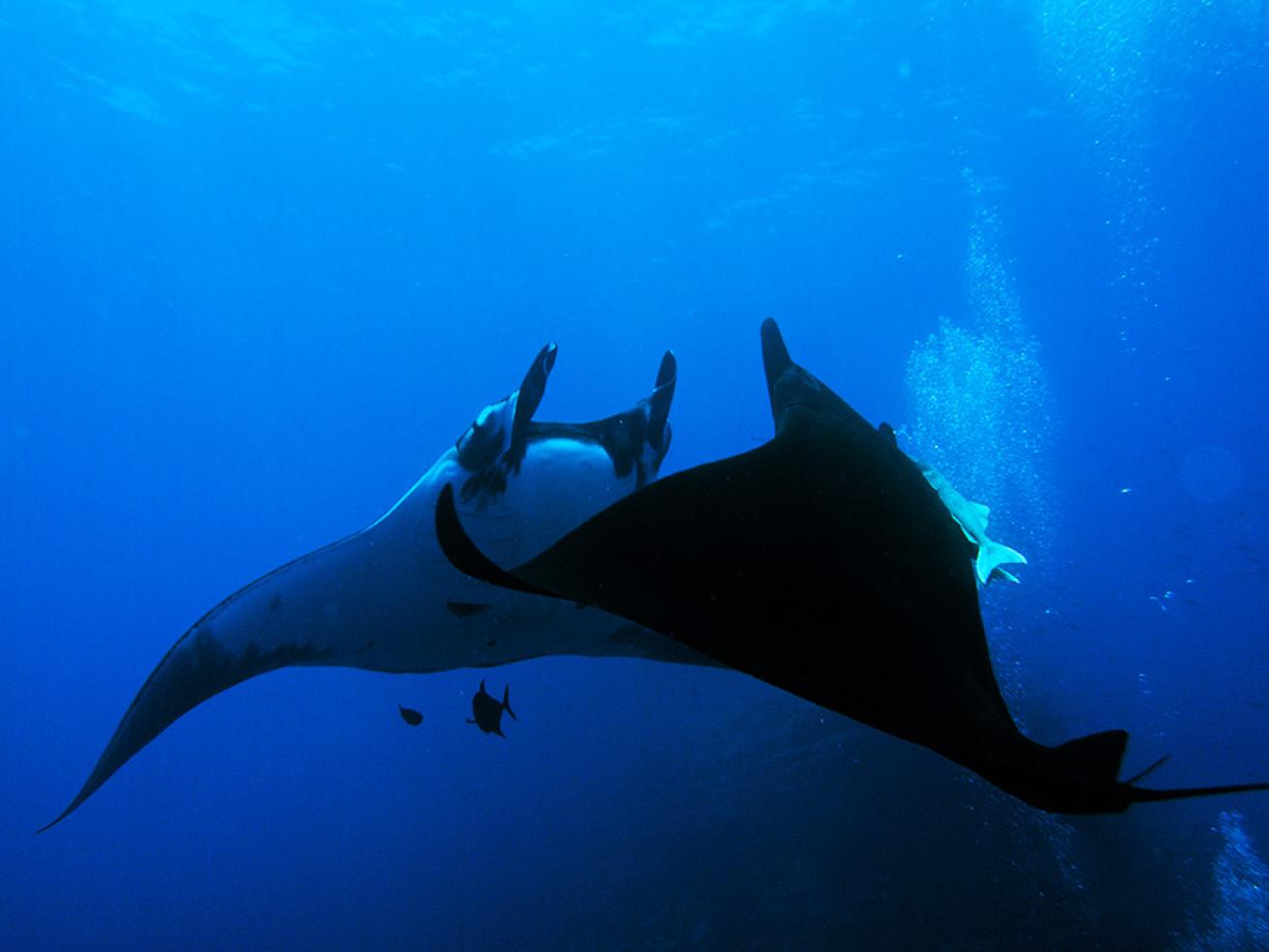
Degan Walters
Here, two mantas are interacting playfully with each other. Manta rays have the largest brains of all fish and much remains to be discovered about their intelligence and natural social behavior. Detailed, long-term observations has proven especially difficult since few have ever been held in captivity successfully.
Location: The Boiler, Socorro Island, Revillagigedos, Mexico
Category: Behavior
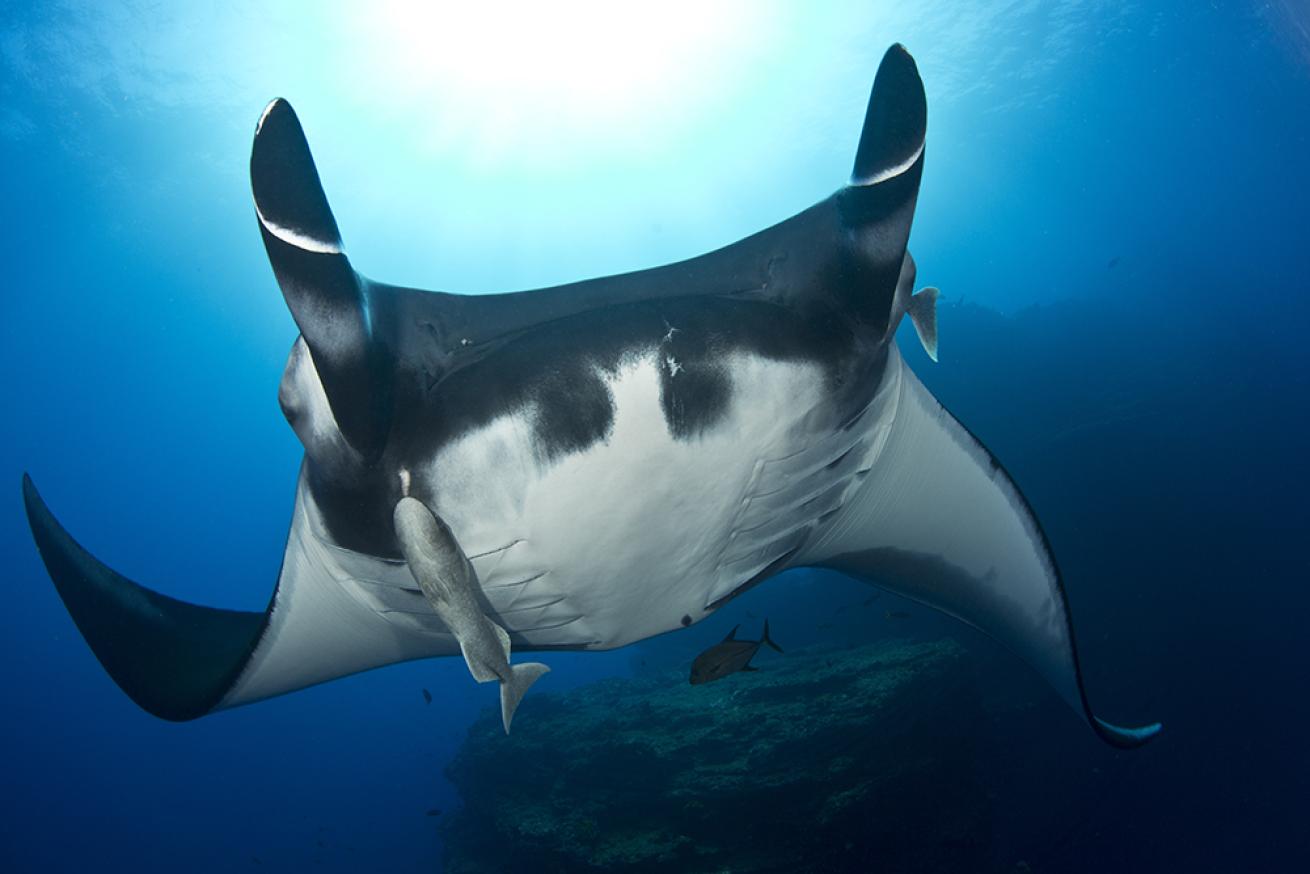
David Valencia
Mantas have sets of distinctive markings and spot patterns that are unique to each individual, much like fingerprints. Manta Matcher, a leading manta ray conservation website and organization, is the first global manta ray database that catalogs individuals via this spot identification. You can also adopt a manta ray!
Location: El Boiler, Revillagigedo, Mexico
Category: Behavior
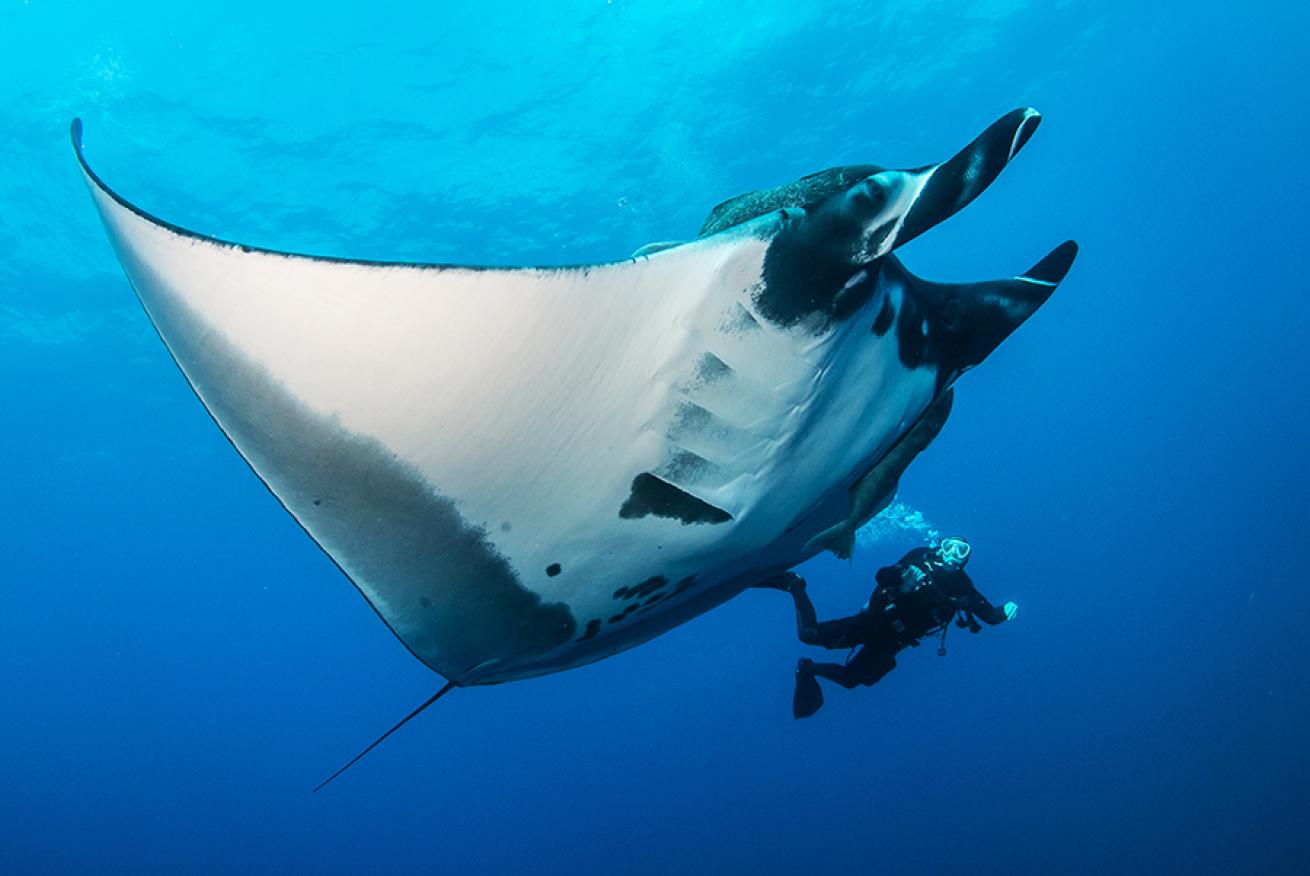
David Gallardo
Giant manta rays are extremely acrobatic, often jumping high and clear of the water. It is not known why mantas leap from the water but a variety of theories abound: to impress females, to help control parasites, to escape predators, to communicate or maybe just to play.
Location: The Boiler at San Benedicto Island, Mexico
Category: Divers
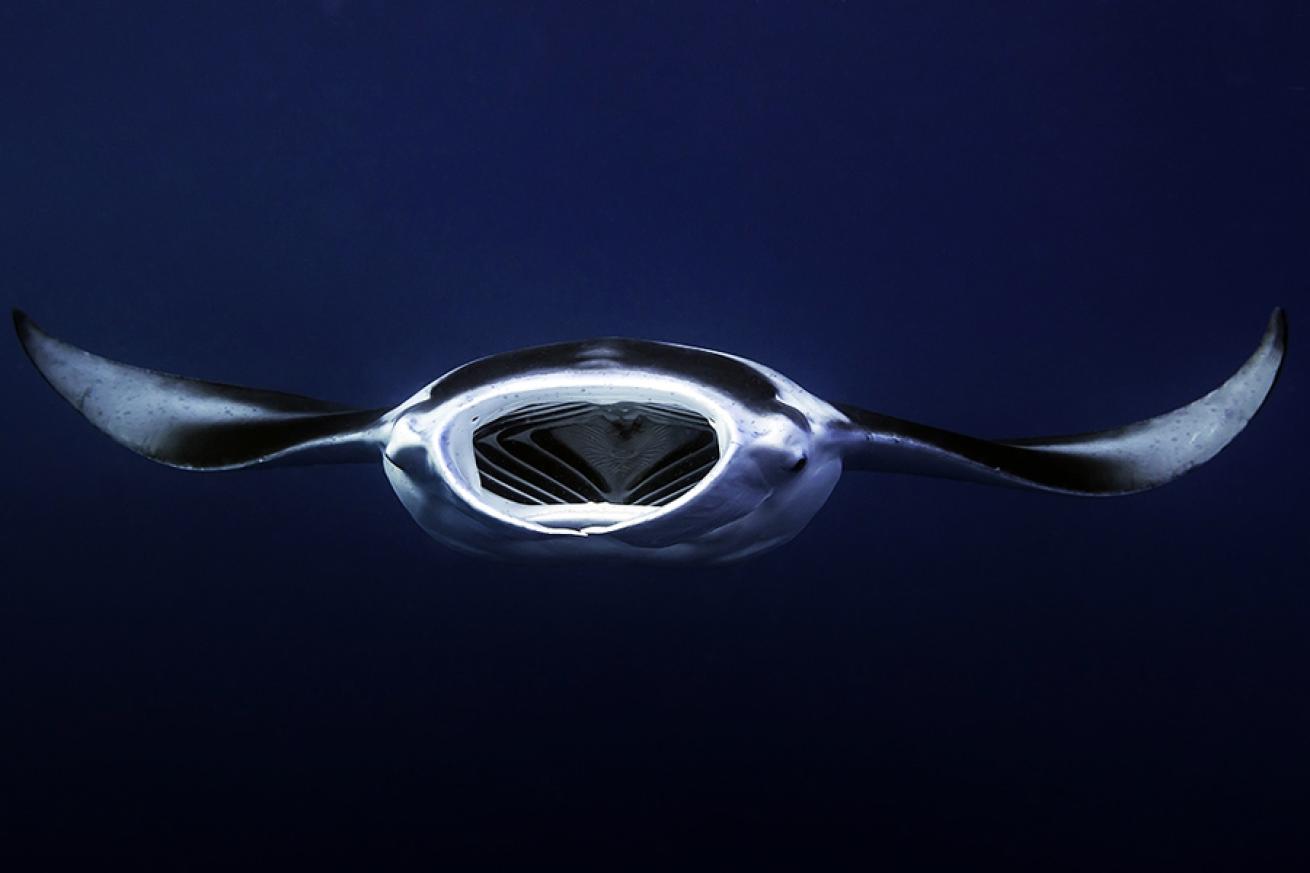
Steffen Binke
Giant manta rays are primarily plankton feeders. They feed by using the unfurled cephalic fins on the head to funnel plankton-rich water into the mouth where gill rakers filter out the plankton. As they feed, mantas often display their graceful acrobatic skill to optimize their plankton-rich water intake.
Location: Republic of Palau, Micronesia
Category: Behavior
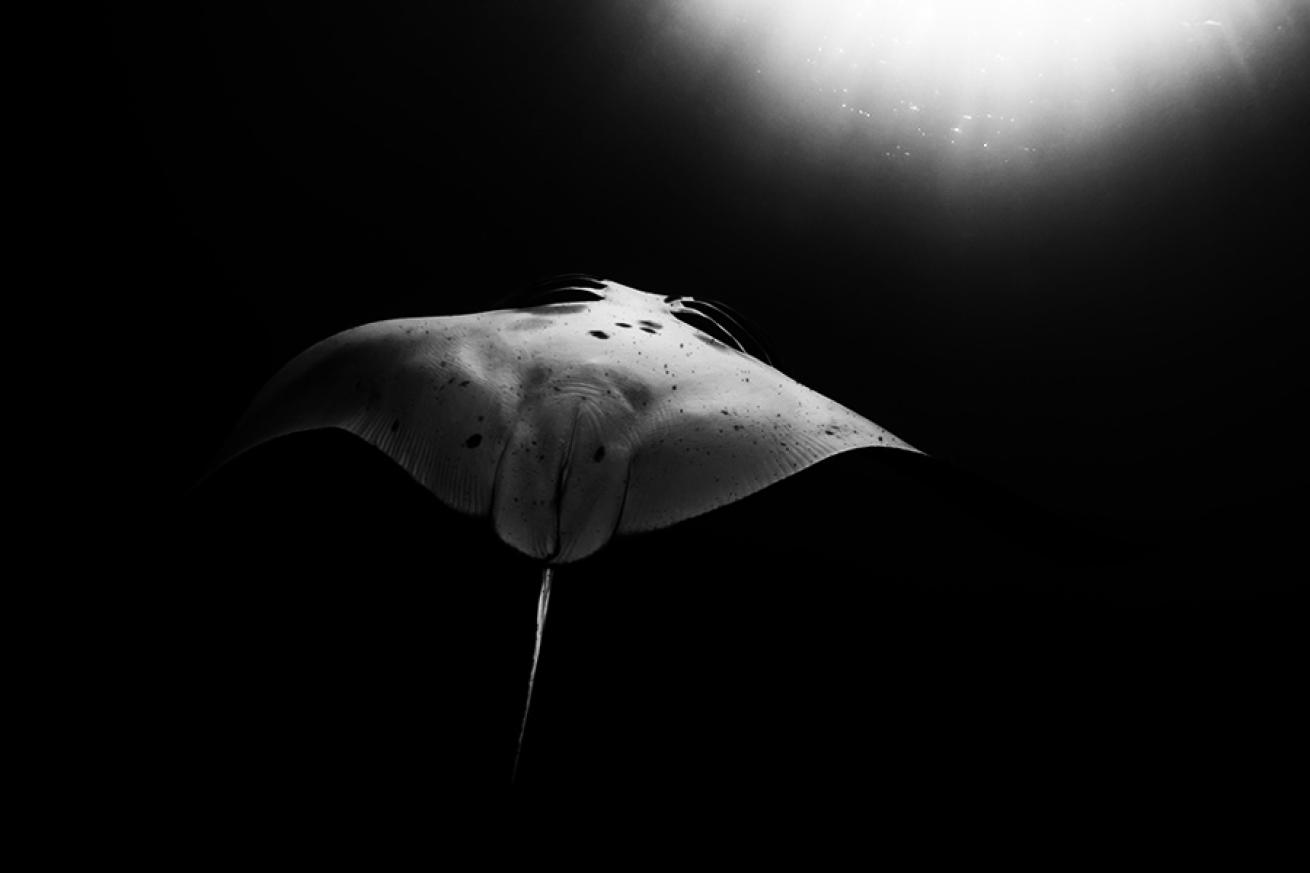
Steffen Binke
A manta ray turns and flips all around while feeding.
Location: Republic of Palau, Micronesia
Category: Wide Angle
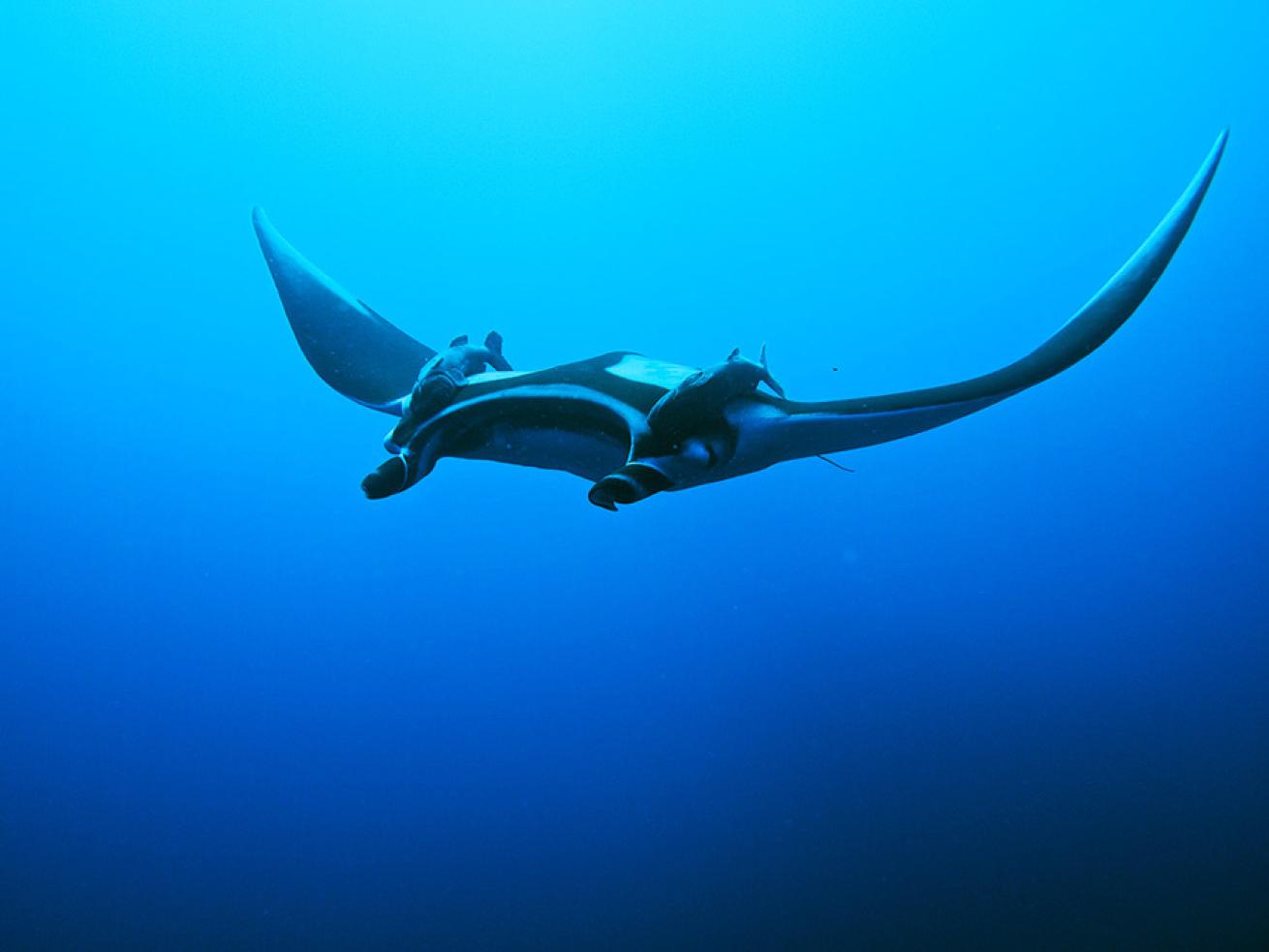
Degan Walters
Here's a manta ray enjoyinh a remora cleaning station. Several fish species, including wrasses and remoras, share symbiotic relationships with manta rays. As they ride aboard them, they rid rays of parasites and pick away at dead skin and fallen food particles.
Location: The Boiler, Socorro Island, Revillagigedos, Mexico
Category: Behavior
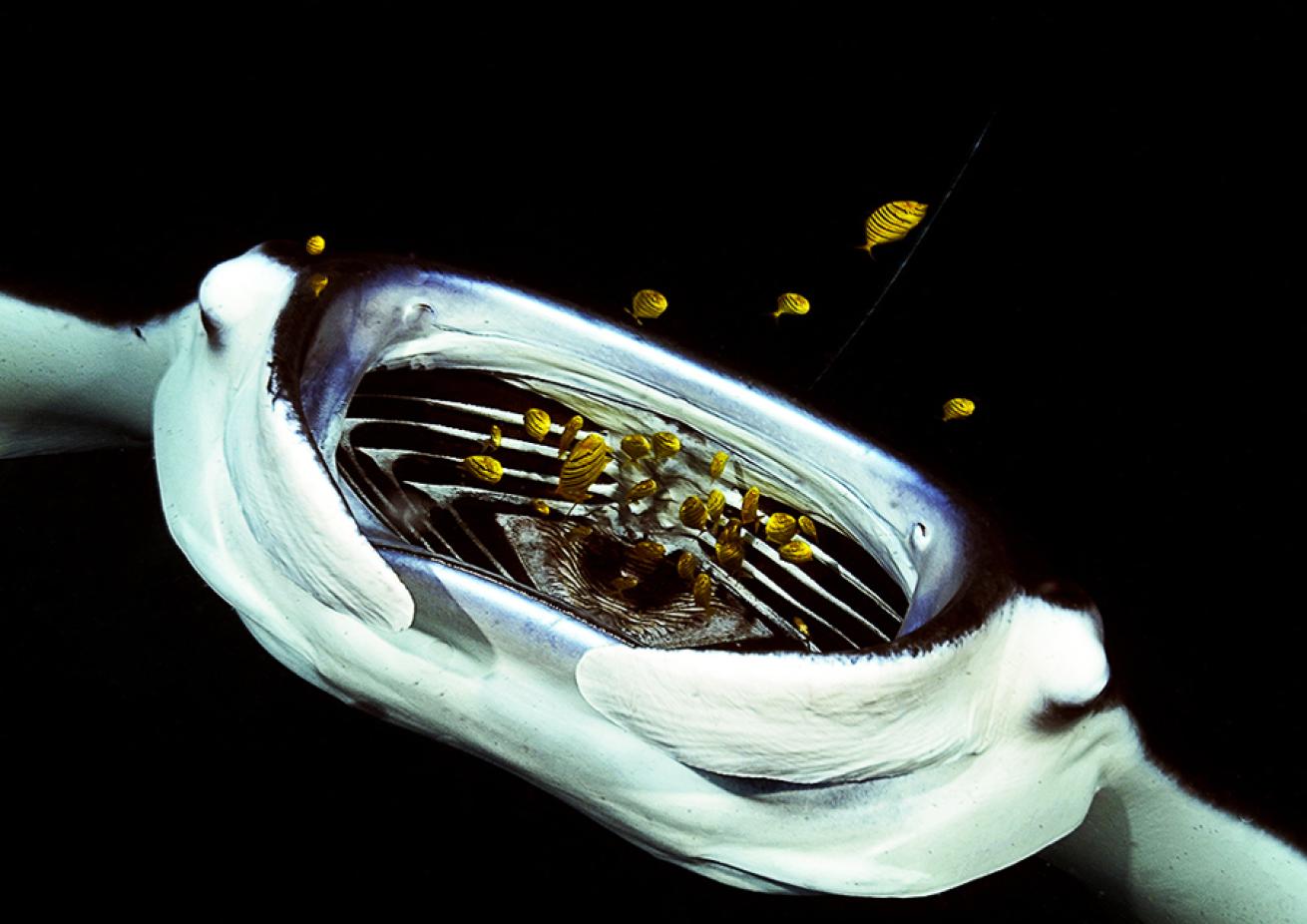
Marchione Giacomo
Location: Manta Point, Raja Ampat, Indonesia
Category: Behavior
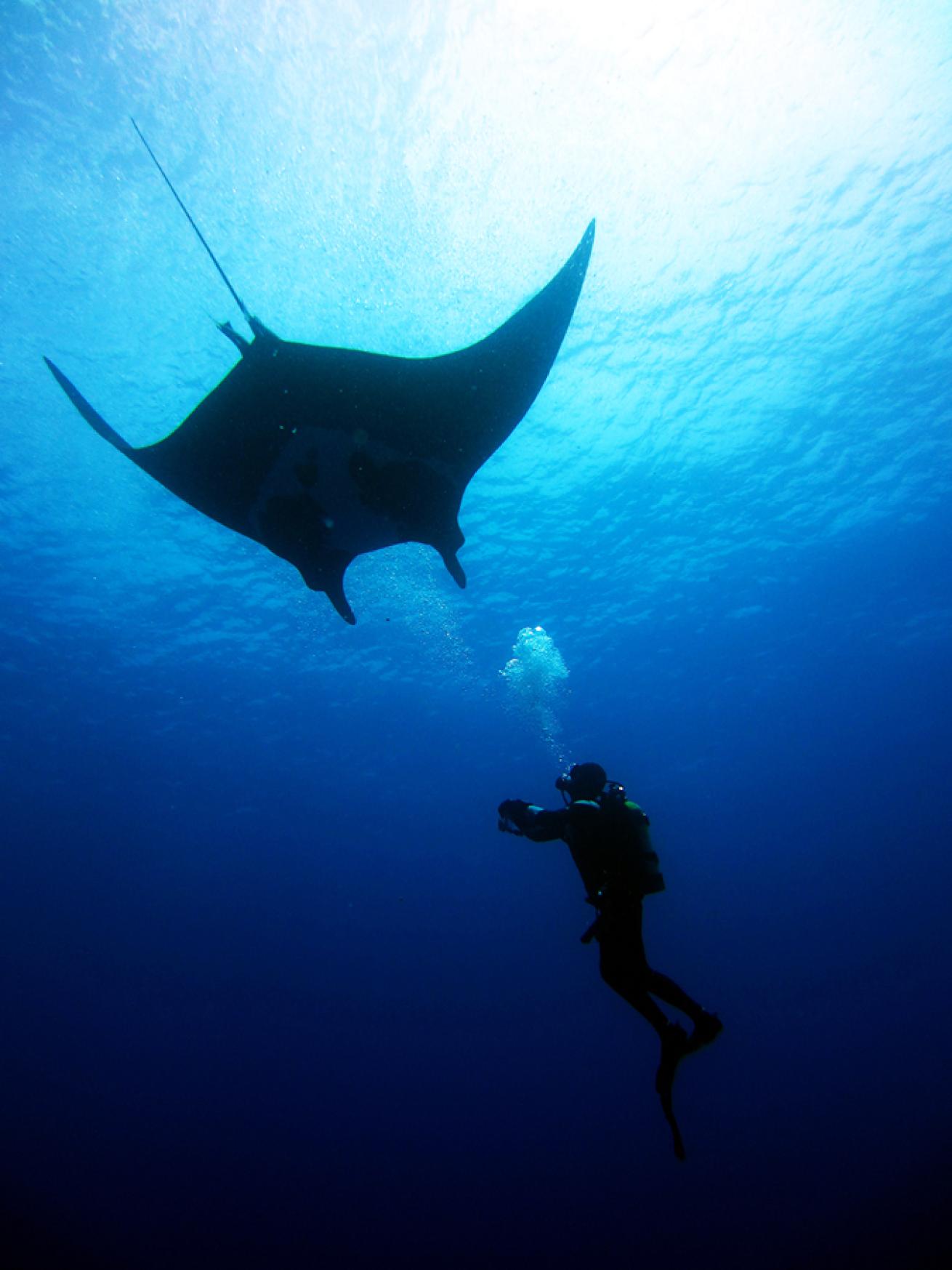
Turchian Mustafa
Because the cephalic fins at the front of a manta rays head are said to resemble devils horns, it has resulted in nicknames — the devil fish or the devil ray. According to some Micronesian myths, mantas could wrap their powerful wings around humans in order to squeeze them to death. While this is completely untrue, the only defense mantas do have are their strong, muscular fins that can pack a powerful punch.
Location: The Boiler, San Benedicto Island, Mexico
Category: Divers
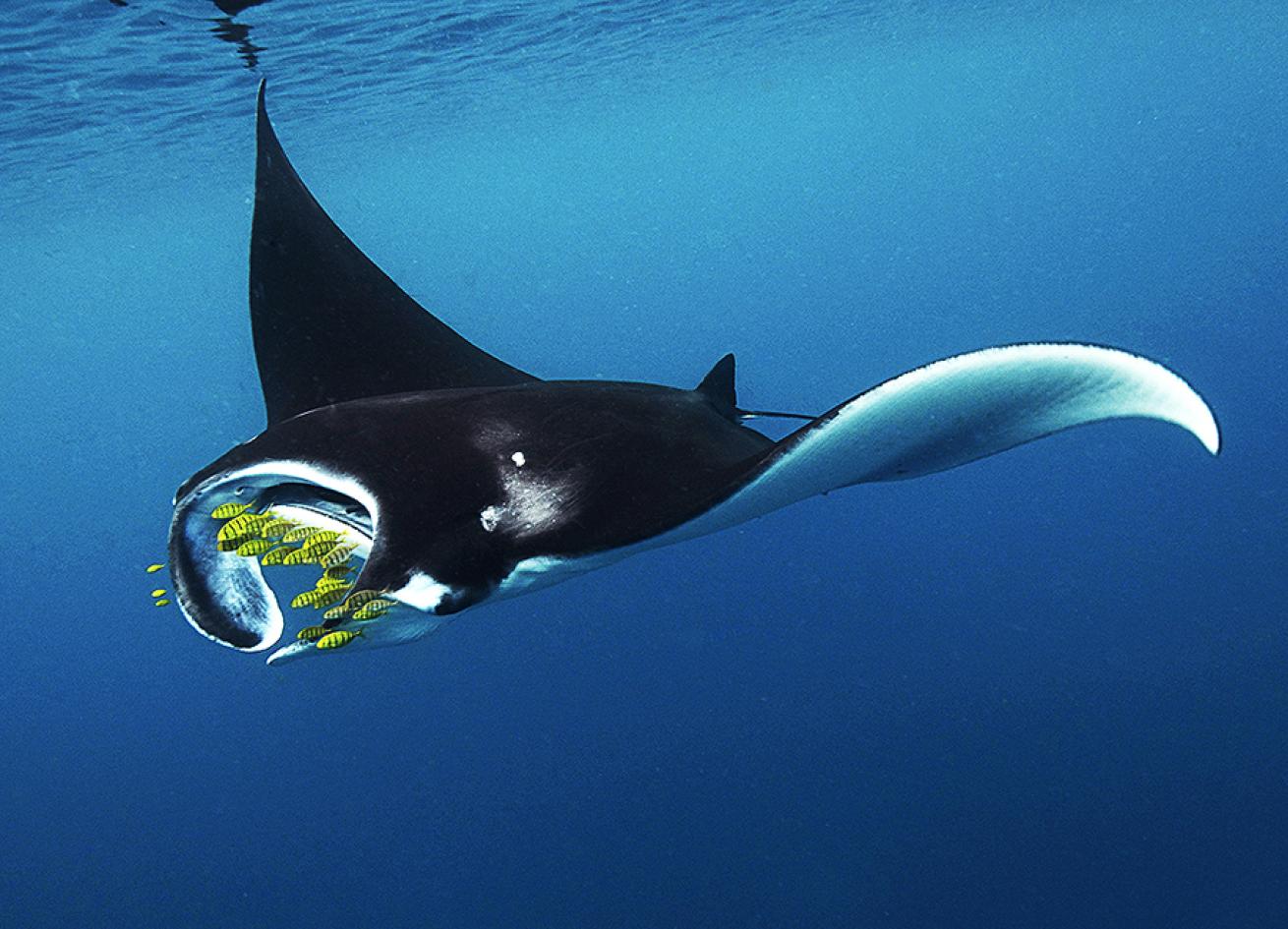
Marchione Giacomo
Location: Manta Point, Raja Ampat, Indonesia
Category: Wide Angle
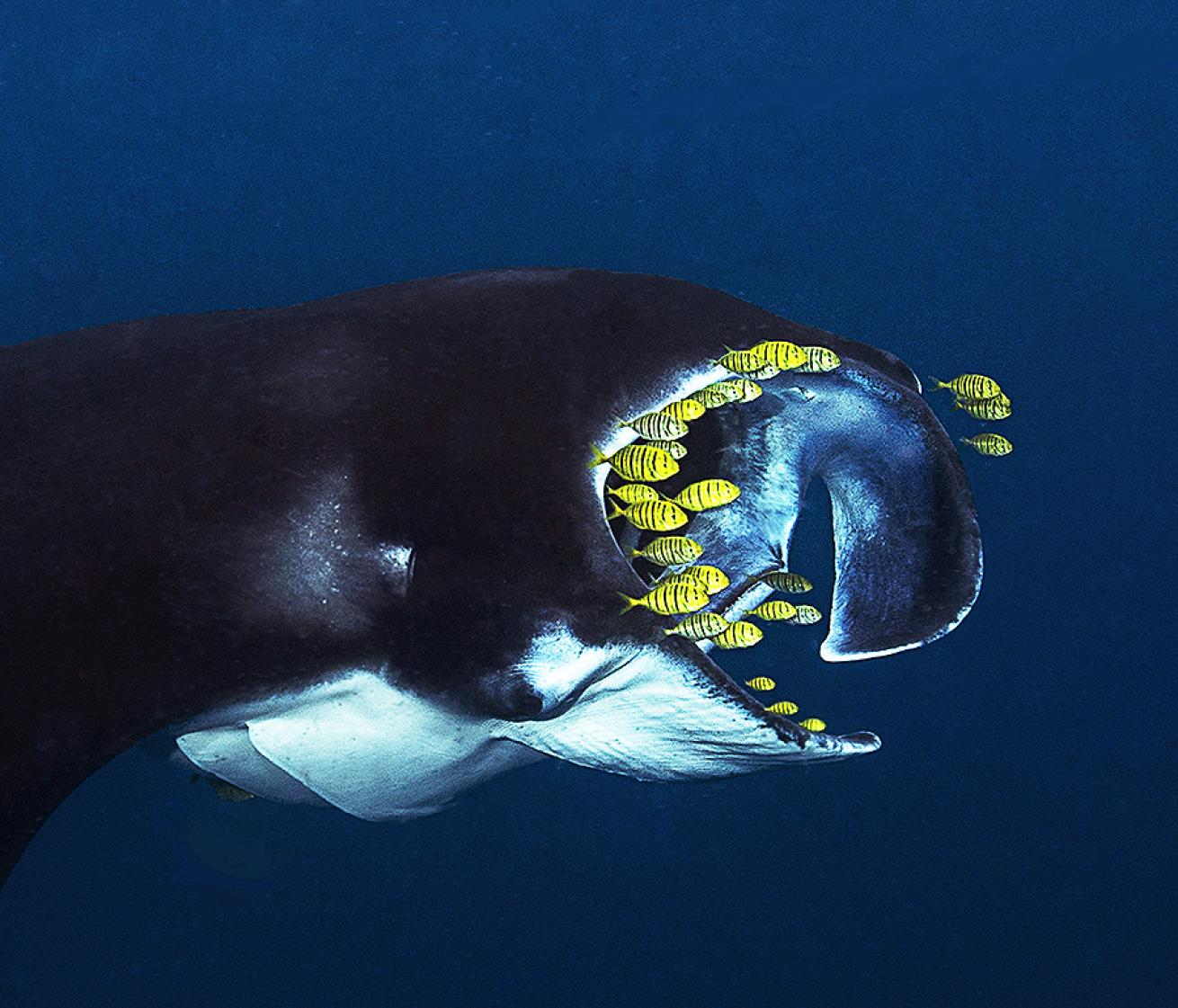
Marchione Giacomo
A giant manta with gold trevallies lining its gaping mouth while feeding.
Location: Manta point. Raja ampat. Indonesia
Category: Behavior
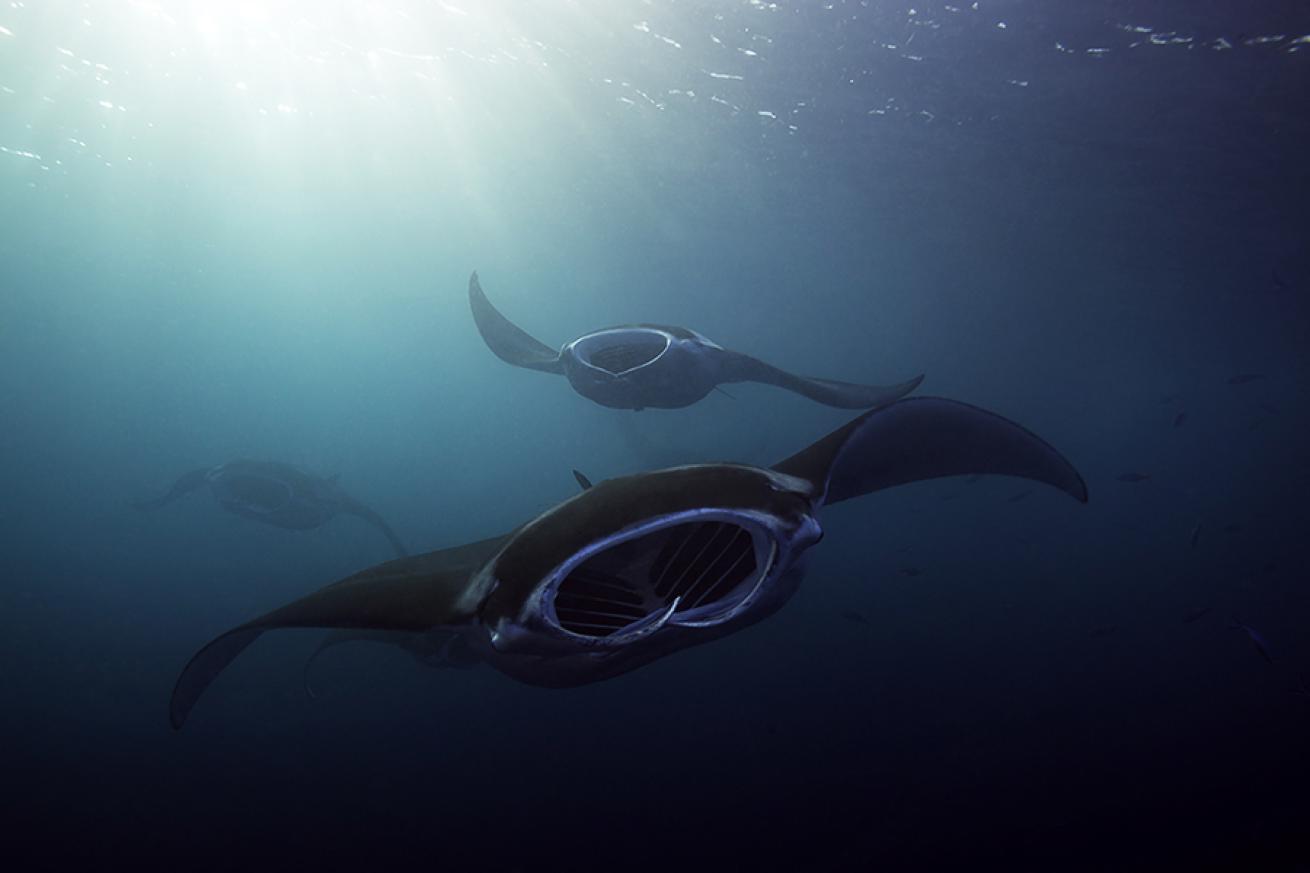
Steffen Binke
3 Manta Rays feeding on Plankton during in the late afternoon. Mantas are gentle, fast and highly intelligent.
Location: Republic of Palau, Micronesia
Category: Behavior
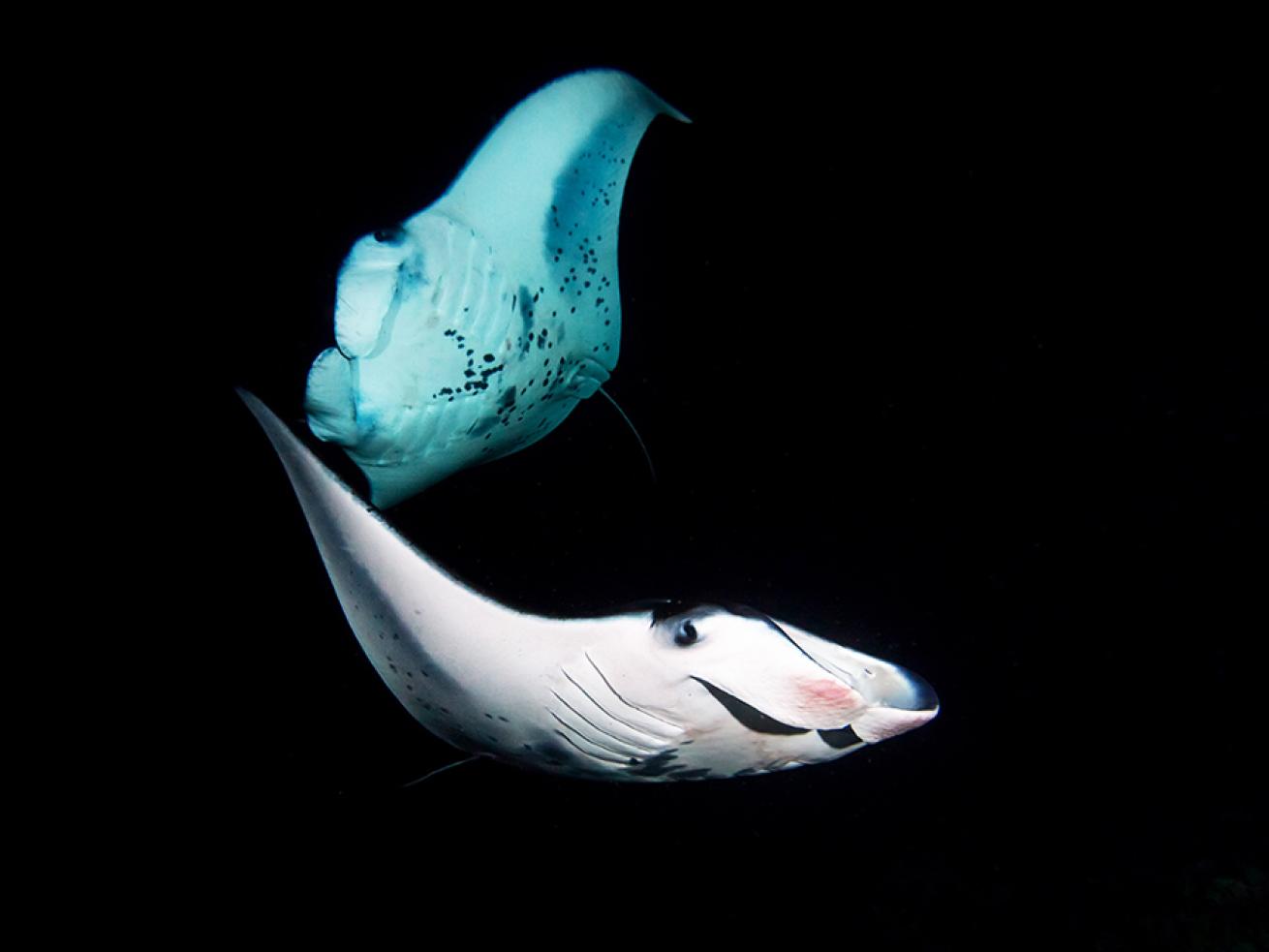
Taiki Sakai
Every night in Kona, manta rays come to feed on the plankton attracted by the lights of divers and snorkelers. They swoop and roll just inches from the faces of the spectators.
Location: Kona, Hawaii
Category: Wide Angle
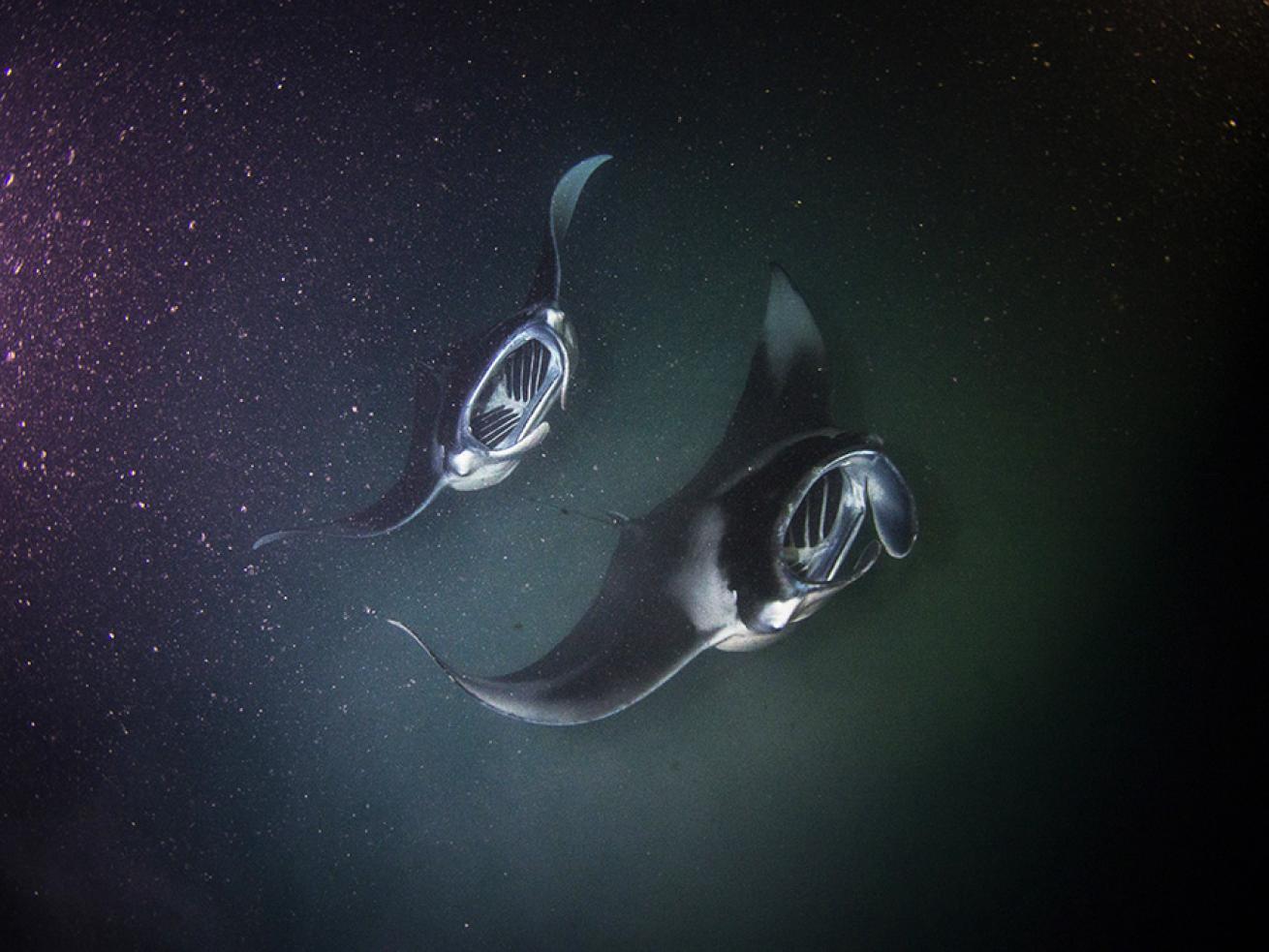
Kyle McBurnie
In order to identify between the two different subspecies of manta rays, the giant manta ray (Manta birostris) and the reef manta ray (Manta alfredi), the giant manta has distinctively brighter shoulder markings upon the top of its body than the reef manta whose markings are more faded and less defined.
Location: Republic of the Maldives
Category: Wide Angle
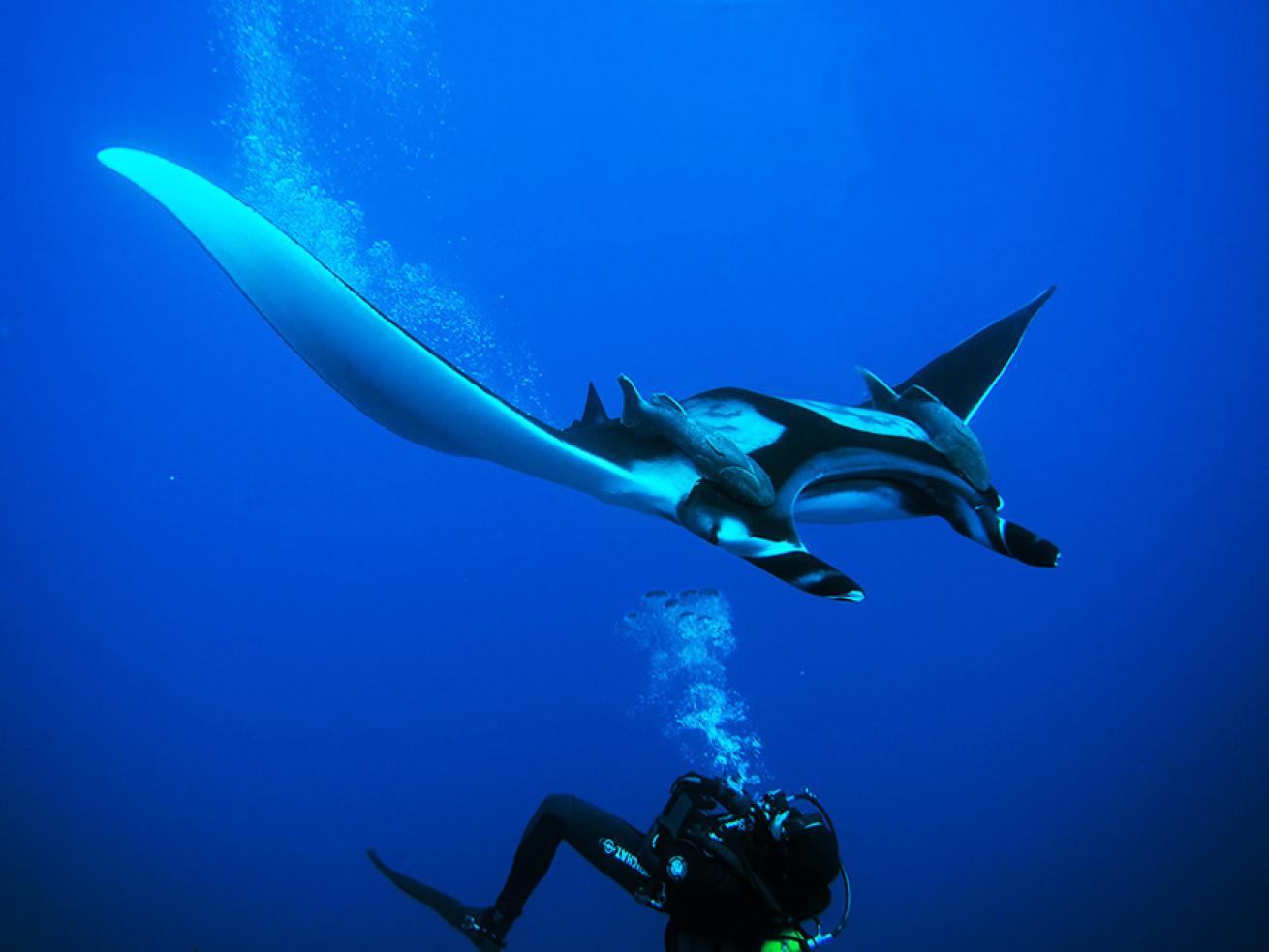
Degan Walters
A manta ray seeks out diver bubbles. Manta rays are curious and gentle creatures who enjoy interacting with divers. Unlike stingrays, mantas lack stinging barbs on their long tails.
Location: The Boiler, Socorro Island, Revillagigedos
Category: Divers
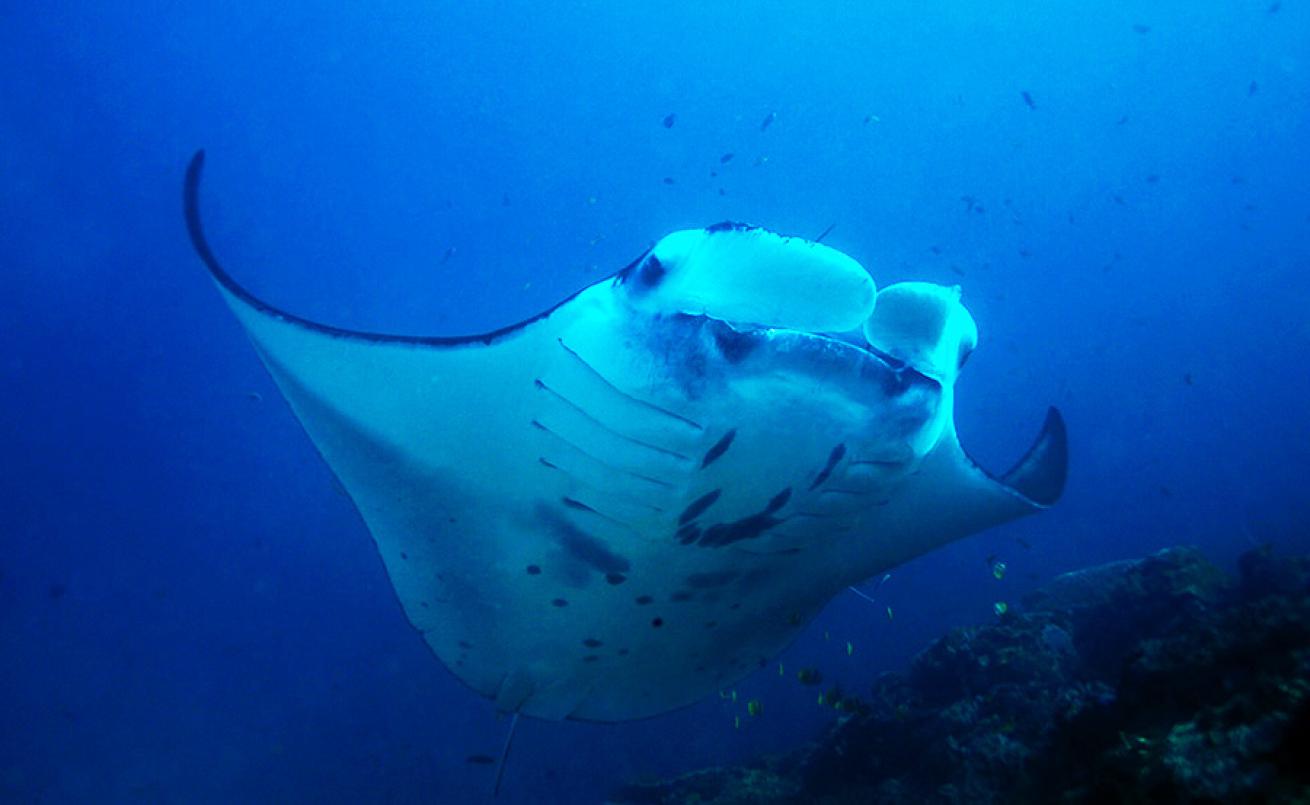
Jeffrey Howery
Location: Komodo Islands, Indonesia
Category: Behavior
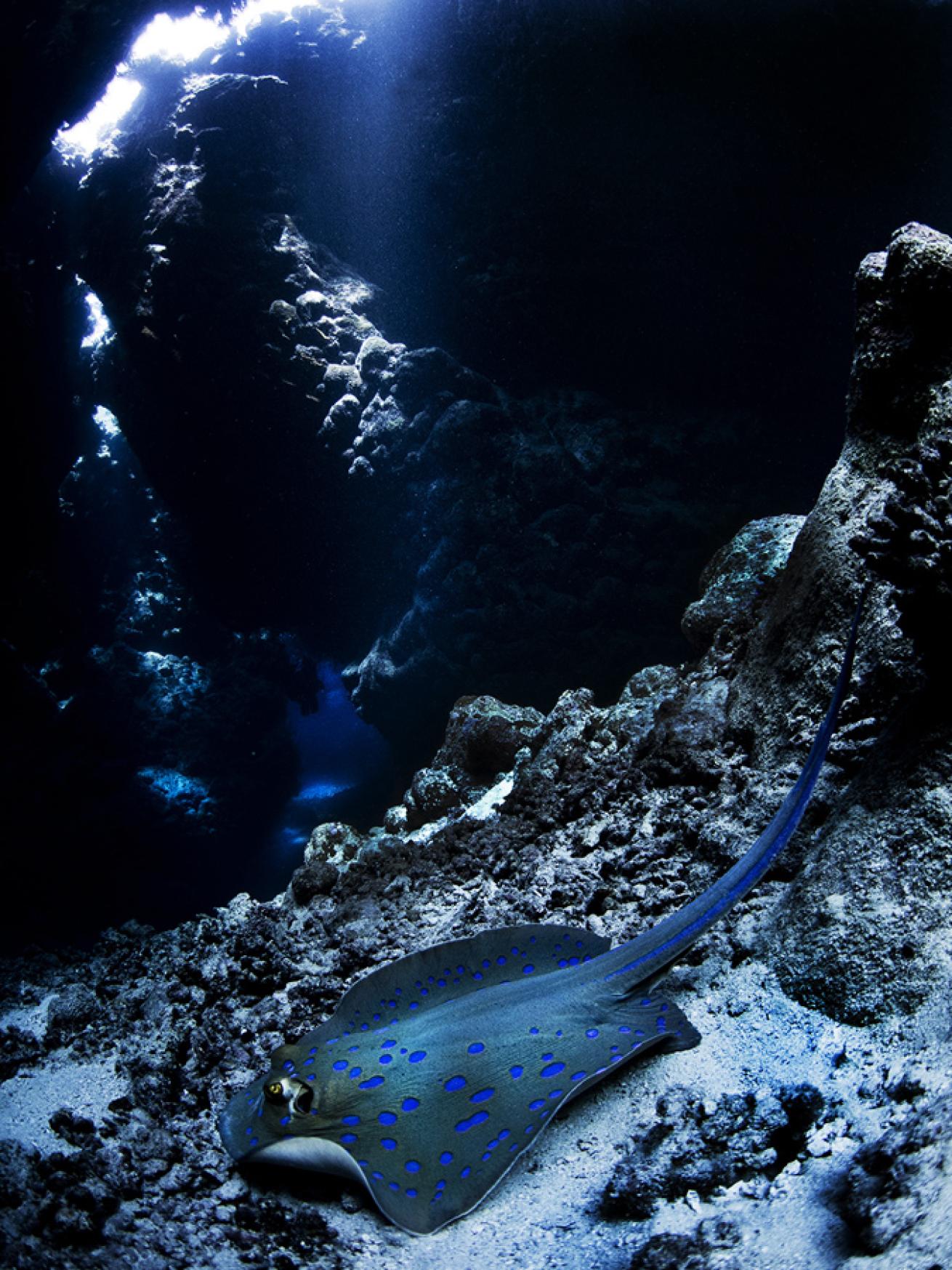
Arne Lanting
I found this treasure at the end of the tunnel of the magical cave.
Location: St. John's Caves, South Egypt
Category: Wide Angle
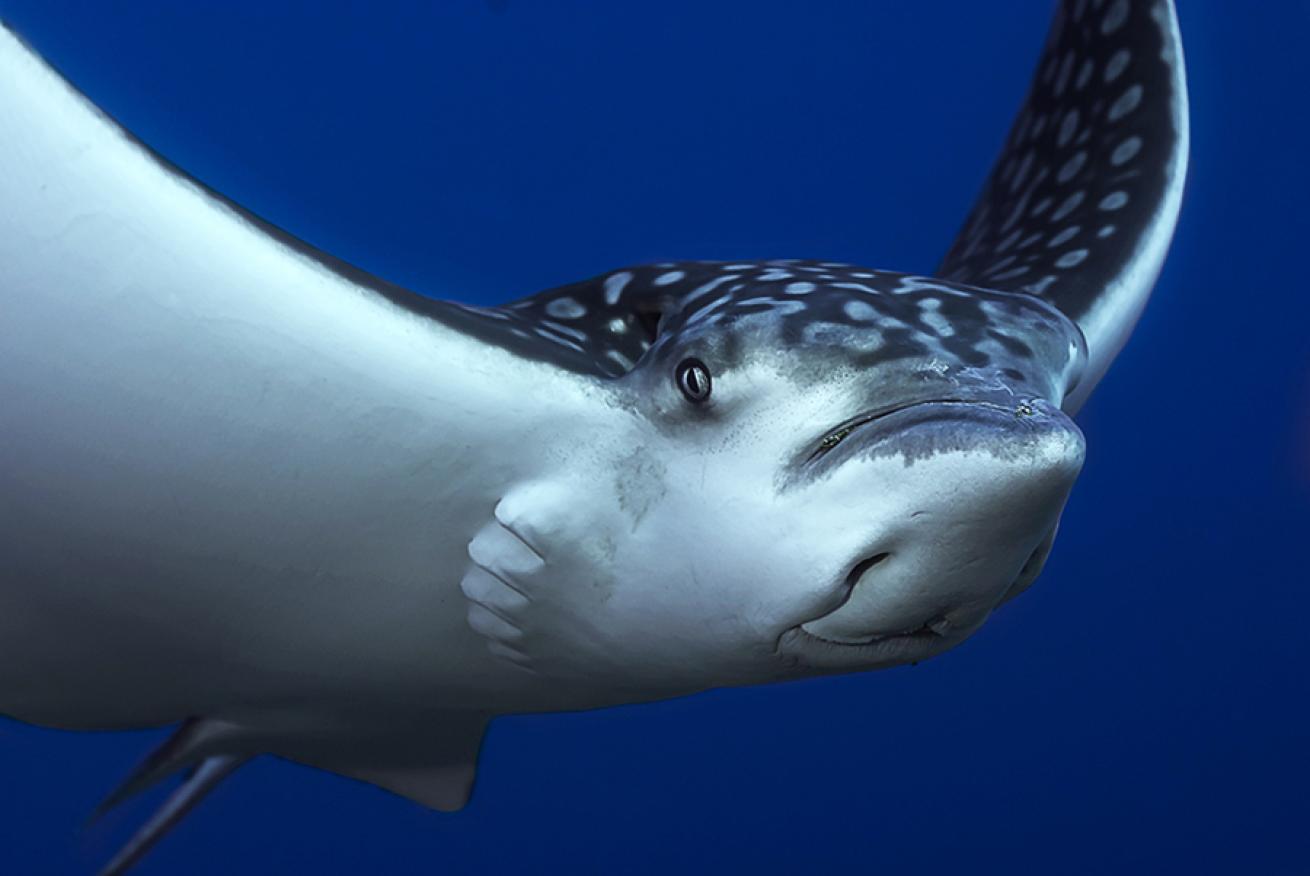
Steffen Binke
A close-up encounter with a spotted eagle ray (Aetobatus narinari). They are smaller than their manta ray cousins, growing to an average wing span of around 9 feet. Their snouts are rounded and pointed at the tip, hence resembling a bird’s beak.
Location: Belize
Category: Wide Angle
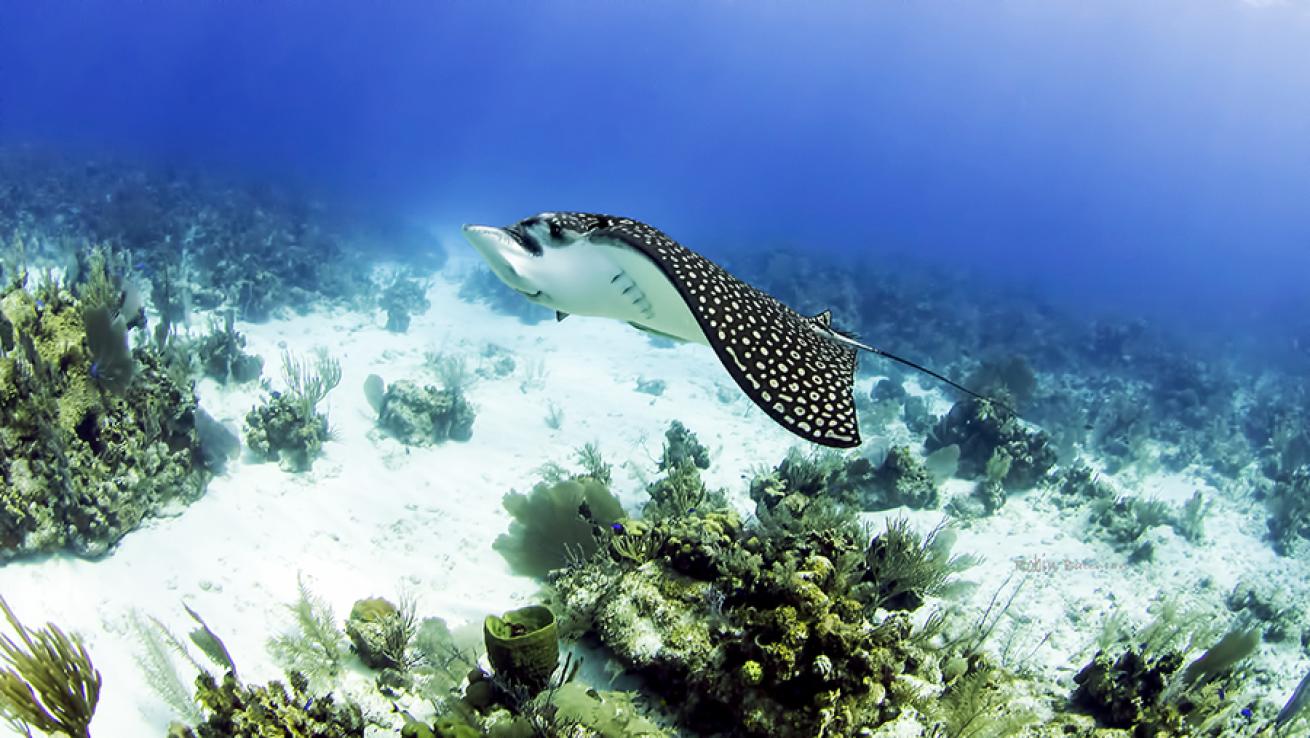
Robin Bateman
The spotted eagle ray is distributed worldwide in tropical, coastal waters but it is known to travel vast distances across oceanic basins. It swims by "flying" through the water via the undulation (wavelike motions) of its large pectoral fins.
Location: Lemon Reef, Grand Cayman
Category: Wide Angle
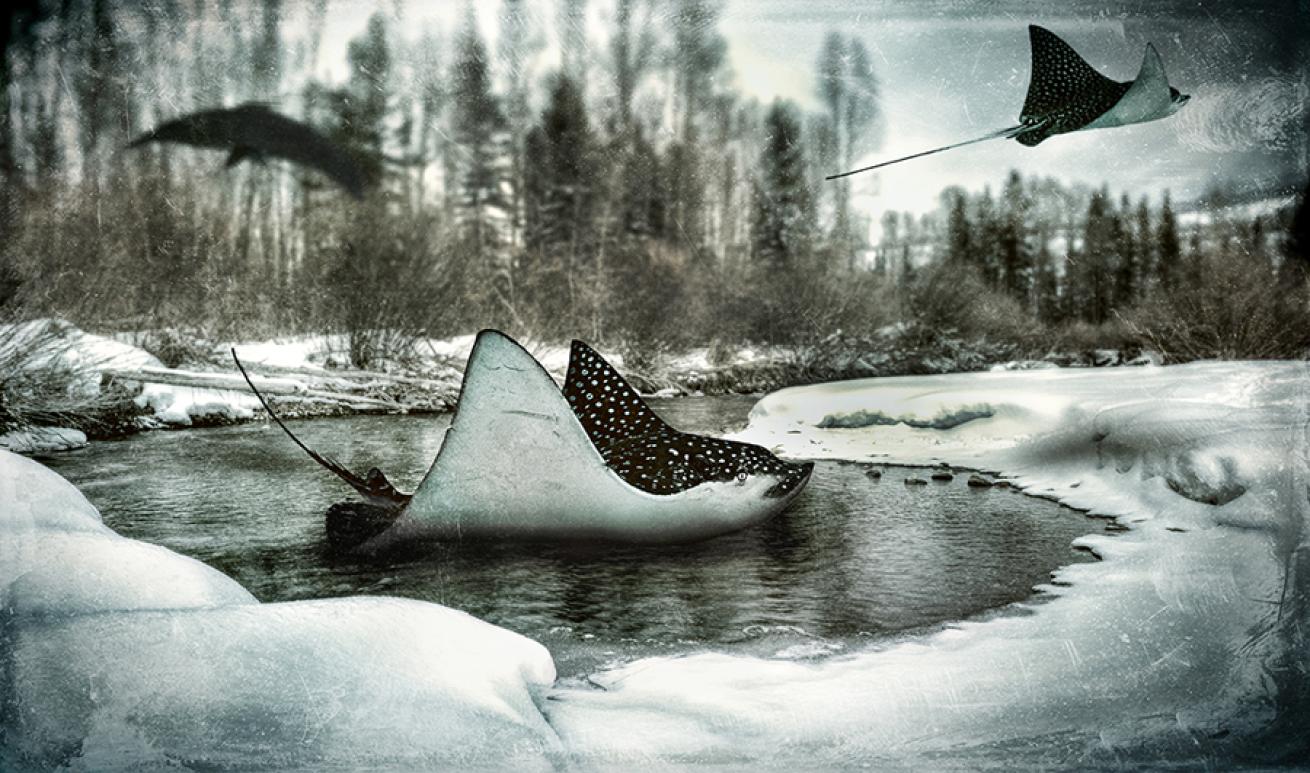
Conor Culver
A surreal depiction of soaring spotted eagle rays on the hunt. In their natural environment, eagle rays hunt for clams, oysters, shrimp, octopus, squid and sea urchins, as well as small bony fishes.
Location: The mind of Conor Culver
Category: Behavior
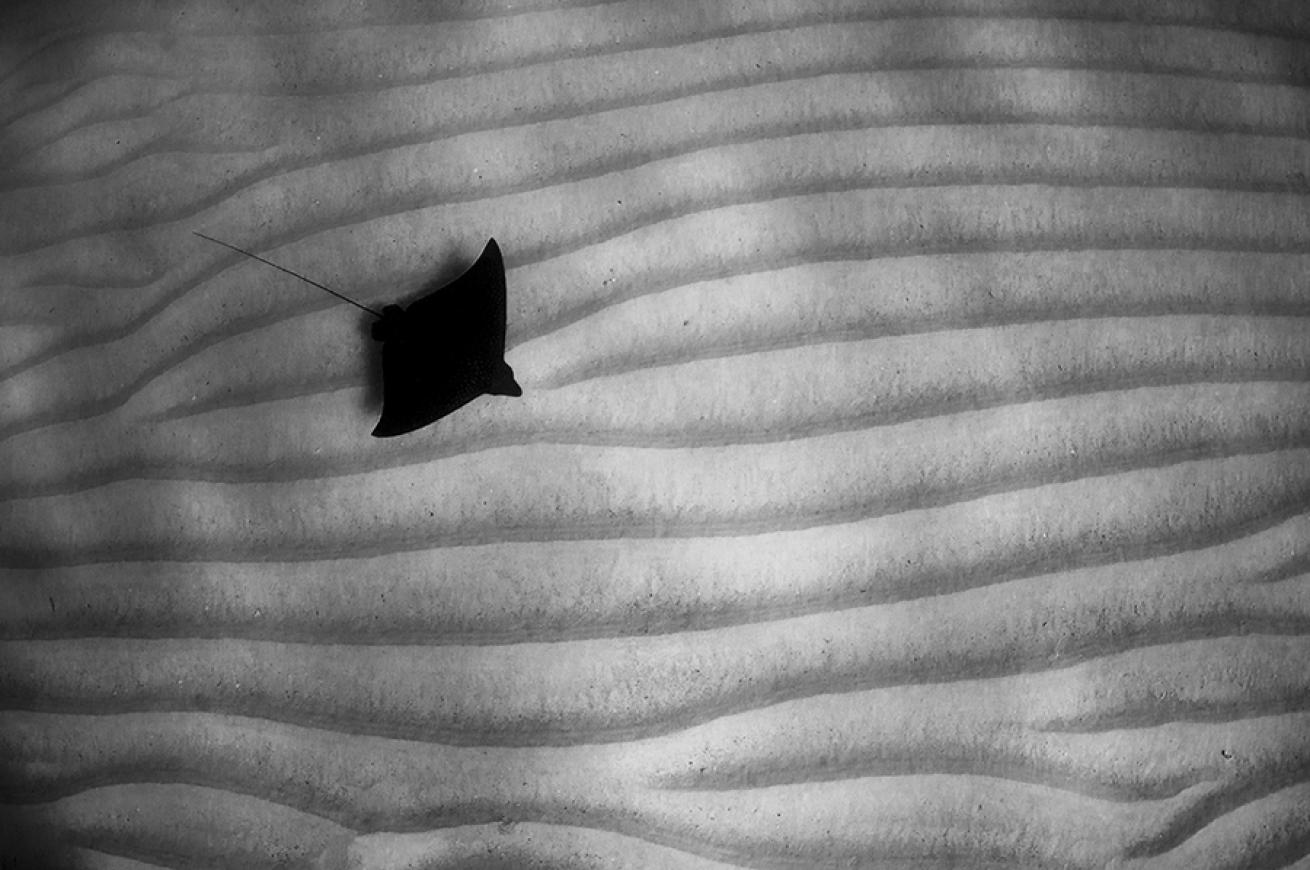
Shane Gross
An eagle ray swims over perfect sand ripples resembling a manicured zen garden. Well adapted with its shovel-shaped snout and electroreception ability to detect, the eagle ray is ideal for hunting in the mud and sand for benthic invertebrates.
Location: Harbour Island, Bahamas
Category: Wide Angle
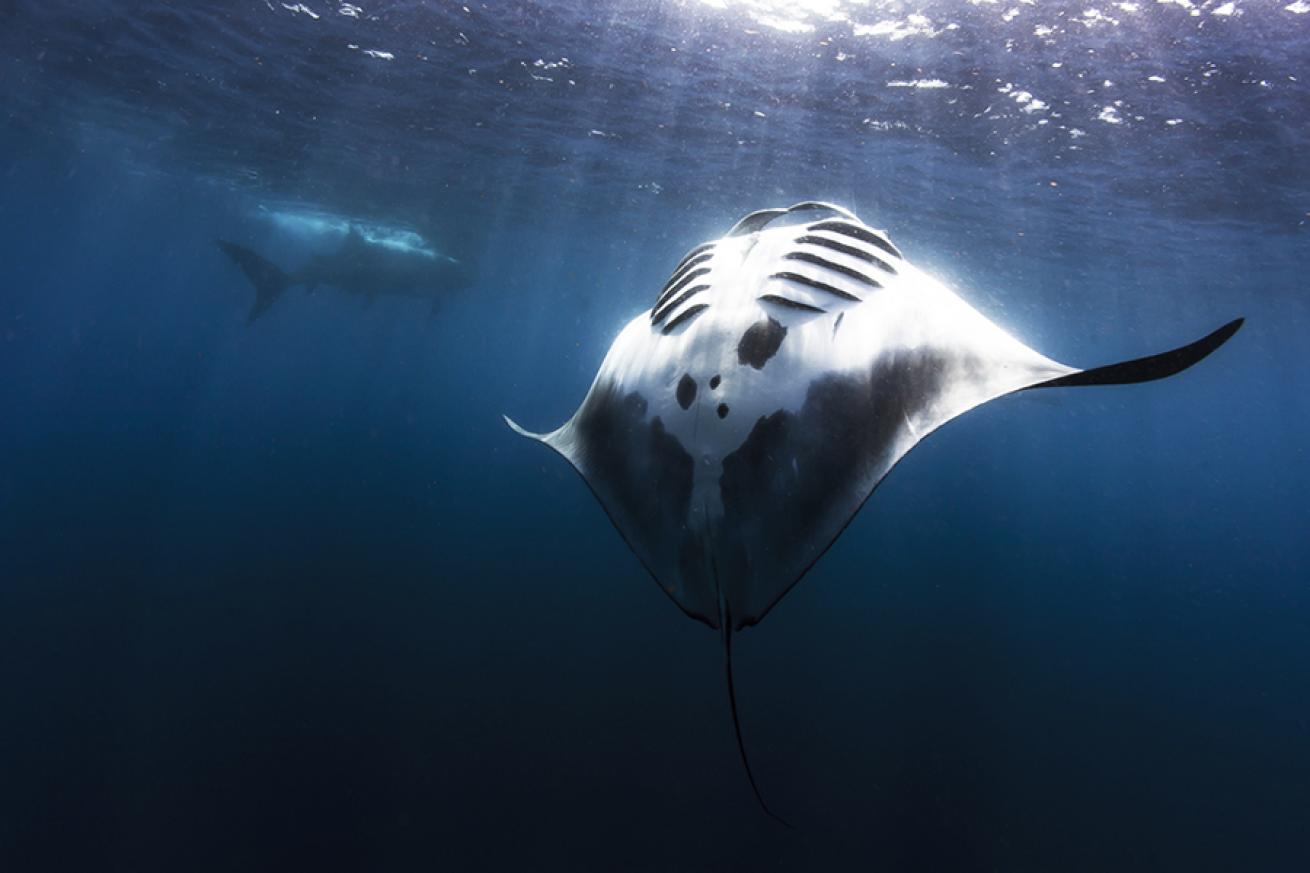
Christian Vizl
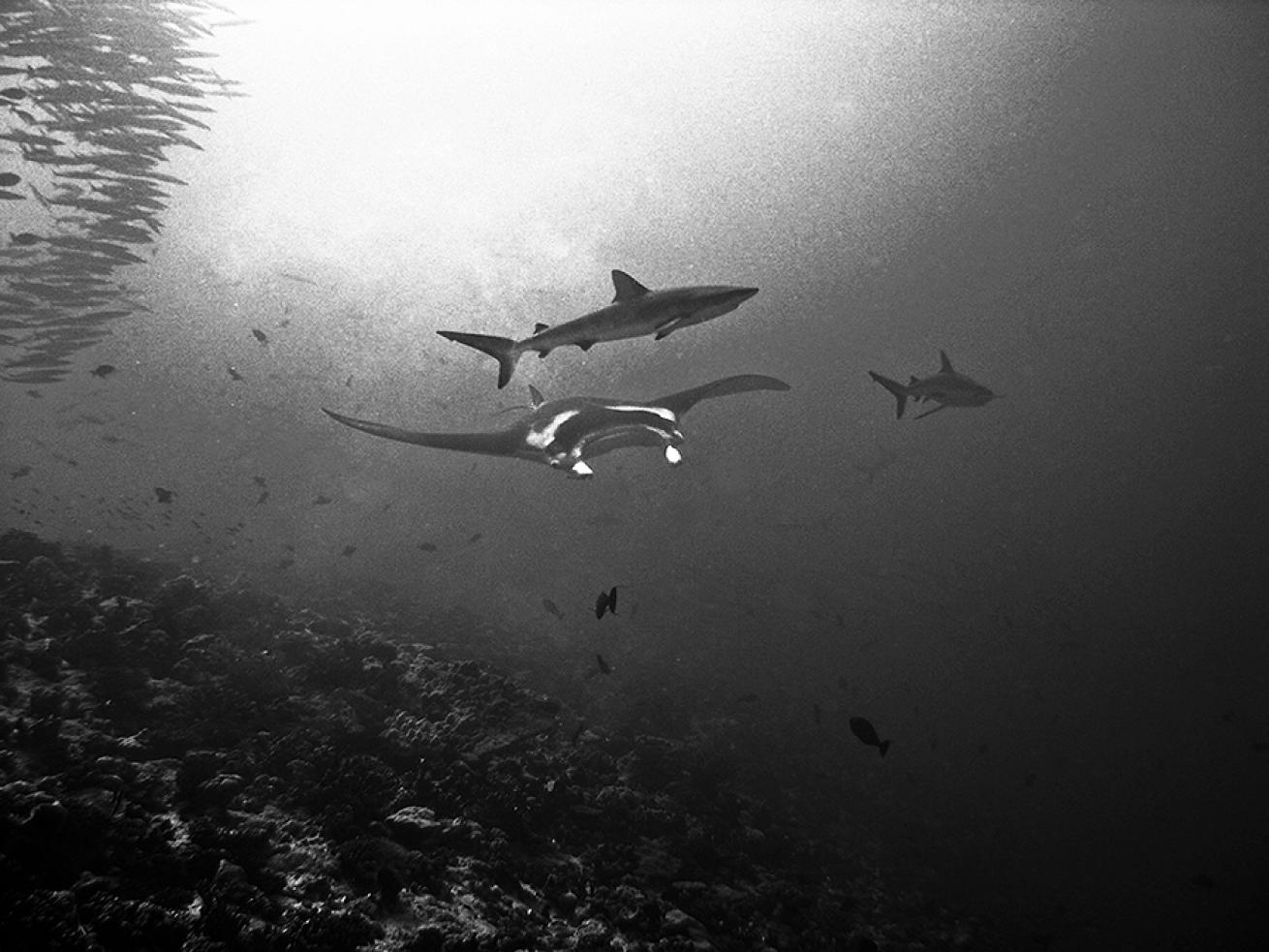
David Valencia
Mantas are a common sight of this isolated atoll. The strong currents bring nutrients and plankton, the nutrients bring the fish, and the fish attract the sharks. Such is the circle of life.
Location: Toau Atoll, French Polynesia, Micronesia
Category: Wide Angle
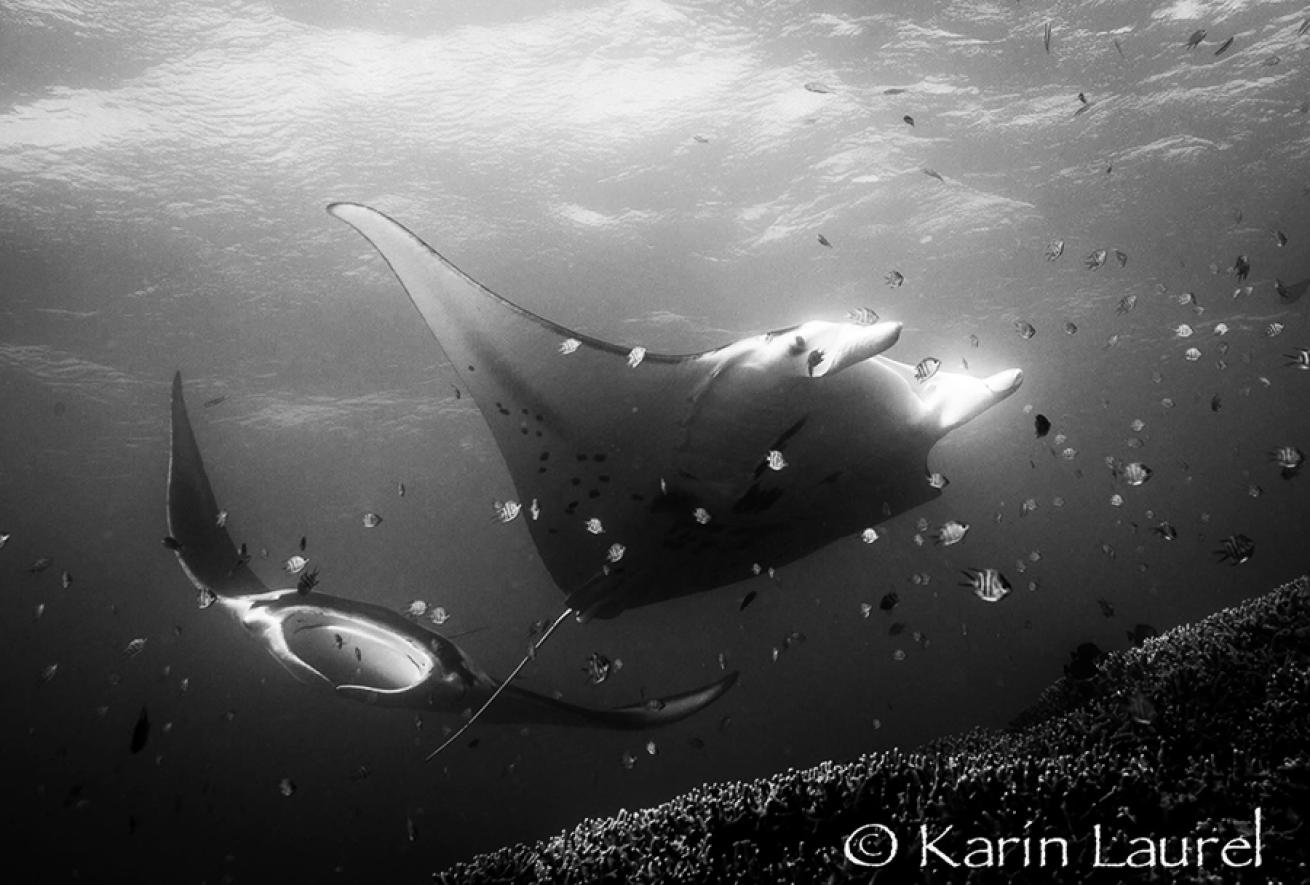
Karin Laurel
Location: Yap Islands, Micronesia
Category: Wide Angle
By Eric Rodriguez
The enigmatic rays of our blue planet have long captivated wide-eyed scuba divers, marine scientists and sea-life photographers with their otherworldly appearances and graceful and mysterious behaviors. This fascination held true for much of the shining talent involved in Scuba Diving magazine's 2014 Through Your Lens photo contest. So enjoy this incredible photo-contest gallery dedicated to manta rays, eagle rays and stingrays to witness the rise of the rays!
_Photo names and captions provided by Photographers; contest winners will be announced with the launch of our September/October issue. _
Want more from the 2014 Photo Contest? We've got you covered!
_40 "Masters of Disguise" | Seahorse Central | Eye See You _

